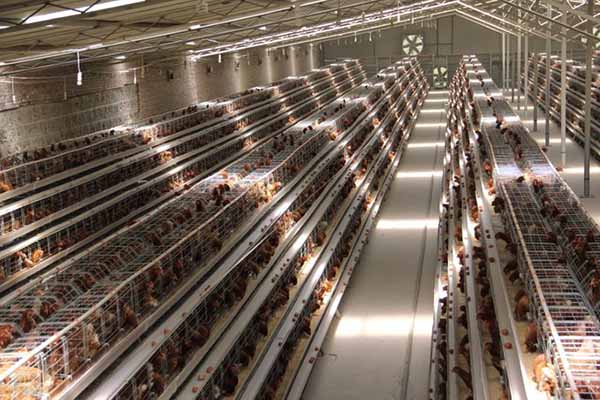Uganda Chicken Farm Scientific Management Experience: A Deep Dive into Best Practices
Time : 2025-06-26
In recent years, the poultry industry in Uganda has witnessed remarkable growth, and one of the key drivers behind this progress is the adoption of scientific management practices in chicken farming. This article aims to provide an in-depth exploration of the scientific management experience of a successful chicken farm in Uganda, focusing on the strategies, equipment, and techniques that contribute to its success.
Introduction
The poultry sector in Uganda plays a crucial role in the national economy, providing livelihoods to thousands of farmers and contributing significantly to food security. To ensure sustainable growth and productivity, chicken farmers have turned to scientific management, leveraging modern technologies and best practices to optimize their operations.
Overview of the Uganda Chicken Farm
Our case study revolves around a prominent chicken farm in Uganda, which has become a beacon of excellence in the industry. This farm boasts state-of-the-art facilities, a dedicated team of professionals, and a commitment to sustainable farming practices.
1. Selection of the Right Chicken Breed
The choice of chicken breed is crucial for the success of a chicken farm. In Uganda, several breeds are popular, including the Ross 308, Cobb 500, and Bovans Brown. The farm we are studying has chosen the Ross 308 breed for its excellent growth rate, feed conversion ratio, and egg production.
2. Hygiene and Biosecurity
Maintaining high levels of hygiene and biosecurity is vital in chicken farming to prevent disease outbreaks and ensure the health of the flock. The farm implements rigorous cleaning and disinfection protocols, along with the use of biosecurity measures such as isolation units and controlled access to the farm.
3. Nutrition and Feeding
Proper nutrition is essential for optimal growth and production in chickens. The farm employs a nutritionist to develop tailored feeding programs for each stage of the birds’ life cycle. They use high-quality, balanced feed formulations, and monitor feed intake and consumption regularly to optimize the diet.
4. Modern Equipment for Improved Productivity
State-of-the-art equipment is a key component of scientific management in chicken farming. The farm utilizes the following equipment to enhance productivity:
– Automatic Feeders: These devices ensure that the chickens receive a consistent and appropriate amount of feed, reducing feed waste and promoting optimal growth.
– Watering Systems: Automated watering systems provide clean, fresh water to the chickens, crucial for maintaining their health and well-being.
– Climate Control: Modern climate control systems help regulate the temperature and humidity in the poultry houses, creating a comfortable environment for the chickens.
– Automated Egg Collection: This system reduces labor costs and ensures that eggs are collected promptly, reducing the risk of contamination and spoilage.
5. Egg Processing and Marketing
The farm not only focuses on production but also on efficient processing and marketing of eggs. They have a modern egg processing plant equipped with advanced grading, packaging, and storage facilities. The farm markets its products through various channels, including retail stores, supermarkets, and online platforms.
6. Training and Capacity Building
Investing in the training and development of staff is a cornerstone of scientific management. The farm provides regular training sessions for its employees on various aspects of chicken farming, including animal husbandry, nutrition, and biosecurity.
7. Environmental Sustainability
The farm recognizes the importance of environmental sustainability and has implemented several initiatives to minimize its ecological footprint:
– Renewable Energy: The farm uses solar panels to generate electricity, reducing reliance on grid power and cutting down on greenhouse gas emissions.
– Waste Management: They have a comprehensive waste management system in place, ensuring proper disposal of poultry manure and other waste products.
– Water Conservation: The farm employs water-saving techniques and recycles water where possible to minimize water usage.
Conclusion
The success of the Uganda chicken farm we have explored is a testament to the benefits of scientific management in the poultry industry. By adopting modern practices, utilizing state-of-the-art equipment, and investing in staff training and environmental sustainability, this farm has set a benchmark for the industry. Its experience serves as a valuable lesson for other chicken farmers looking to improve their operations and contribute to the growth of the poultry sector in Uganda.












